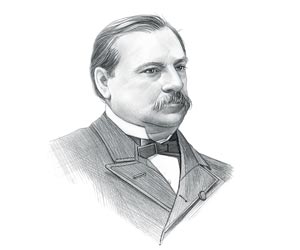|
|
|
|
|
Membership of the Granger movement increased following the Panic of 1873, falling crop prices and the monopolies of railroad companies over the Grain Elevators and increased transportation costs. The Granger Movement gained considerable political power and backed the 1887 Interstate Commerce Act.
The
Granger Movement for kids:
Granges and the Grangers
The
Granger Movement: Period of Civil Unrest
Granger Movement:
Railroad Companies Monopoly
Facts about the Granger Movement for kids The organization started with only six members and like many other worker organizations of the era, like the Knights of Labor adhered to the ideals of fraternalism and developed secret rituals A local organization was called a Grange and the members were referred to as Grangers. The movement was supported by the farmers of Iowa, Nebraska, Kansas, Minnesota, and the Dakotas The Grangers first organized educational programs and social events which addressed the isolation problems of farmers and provided discussion forums on the problems affecting the farming industry. The discussion forums of unified action led to the establishment of Cooperative purchasing ventures to attain lower prices on farm equipment and supplies The Cooperative approach developed into a credit union that enabled Grangers to avoid lending money from corrupt banks that charged extortionate interest rates The Railroad companies gained a monopoly on the Grain elevators by providing the land on which they were together with specially designed grain cars for transporting crops via the railroads. The Grain elevator operators bought the grain from farmers and then sold the crops on at inflated prices and gaining large profits. These Grain Elevator operators used their purchasing power to control prices of crops. The rail magnates, the 'Robber Barons', of the era included wealthy men such as Charles Crocker, Cornelius Vanderbilt, Leland Stanford, Mark Hopkins, Henry Bradley Plant and Edward Harriman The organization built up funds which enabled the Grangers to build some of their own Grain Elevators to challenge the monopolies of the railroad companies. The Grangers used the cooperative system of to band together to combat the problems caused by low prices for their products and discriminatory treatment by the railroad companies. This led to the Grangers becoming an important political force, their numbers enabled them to apply pressure on politicians The influence of the Grangers was particularly strong in Minnesota, Iowa, Wisconsin and Illinois, where political pressure resulted in a series of "Granger Laws" designed to give legislative assistance to the farmers. The 'Granger Laws' set maximum railroad rates, and established state railroad commissions legislation covering warehouses and grain elevators The Railroad Companies challenged the constitutionality of these laws but the U.S. Supreme Court, in Munn v. Illinois (1876), established the principle of public regulation of private utilities devoted to public use as constitutional and led to demands for national legislation. In 1887, Congress passed the Interstate Commerce Act which created the Interstate Commerce Commission as a federal regulatory agency to address Shipping rates and Price discrimination The Grange association led to the rise of Populism in America and the formation of the Populist Party by the American farmers The Colored Farmers Alliance saw the rise of Black Populism |
| US American History |
| 1881-1913: Maturation Era |
|
|
|
|
|
First Published2016-04-19 | |||
|
Updated 2018-01-01 |
Publisher
Siteseen Limited
| ||
|
|

